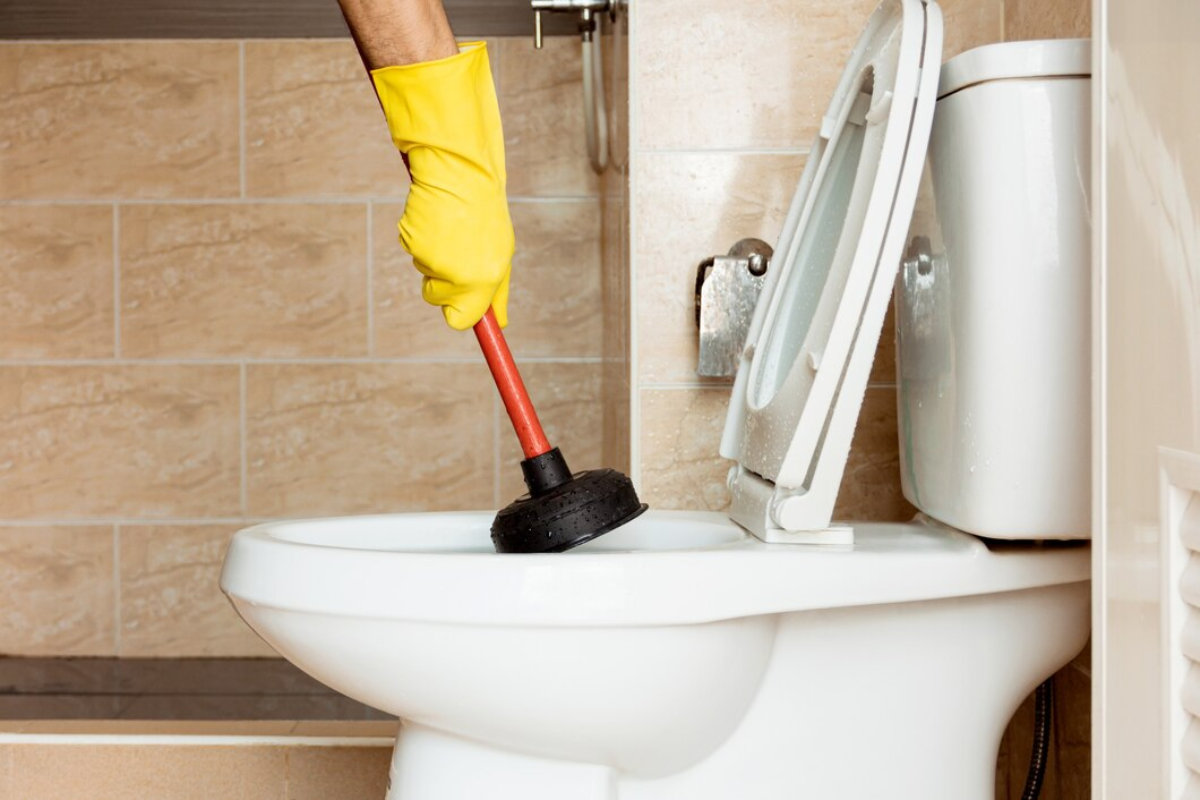Learning how to unclog a toilet doesn’t need to be complicated. In fact, most people can handle a clog on their own with just a few basic tools and a little know-how. Whether it’s a small blockage or something a bit more stubborn, this guide will walk you through the steps to fix it quickly and safely — no plumber required.
Understand What’s Causing the Clog
Clogged toilets are frustrating, but the cause is usually easy to figure out. Before you try any fixes, it helps to understand why the clog happened in the first place.
Toilets often get blocked when something that shouldn’t be flushed goes down. Items like wet wipes, paper towels, cotton balls, and even too much toilet paper can stop the water from flowing. In some homes, older plumbing or low-flow toilets might also make clogs more common.
Most clogs can be handled at home. But if your toilet is overflowing repeatedly, draining very slowly, or making strange gurgling sounds, it might be a sign of a deeper issue in the pipes. In these cases, calling a professional plumber is usually the best option.
Try the Plunger First — It Still Works
One of the simplest ways to unclog a toilet is with a plunger. It might seem old-fashioned, but it’s still one of the most effective tools.
Start by making sure the toilet bowl has enough water to cover the rubber part of the plunger. Position it over the drain hole and push down gently to form a seal. Then pump up and down quickly, maintaining that seal. After several pumps, lift the plunger to see if the water drains.
There are different kinds of plungers, but not all are made for toilets. For best results, use a flange plunger. This type has a smaller extension at the bottom that fits into the toilet drain, creating a better seal and more force.
Use Hot Water and Dish Soap as a Gentle Fix
If a plunger doesn’t work or isn’t available, try using hot water and dish soap. Pour about half a cup of dish soap into the toilet bowl and let it sit for 10-15 minutes. Then slowly add a bucket of hot (not boiling) water from waist height. This can help loosen the clog and allow it to pass. Give it 15-20 minutes, and then try flushing.
This method works best for softer blockages caused by excess toilet paper or waste.
When to Try a Toilet Snake or Auger?
If the plunger and soap method don’t work, a toilet snake or auger might be your next step. These tools are designed to reach deeper into the drain to clear tougher blockages.
Insert the snake into the toilet drain and slowly turn the handle clockwise. Keep pushing gently until you feel resistance. That’s likely the clog. Keep turning to break it up. Once it feels easier to move, pull the snake out and try flushing the toilet again.
Avoid using too much force when using a snake, as this can damage the toilet or pipes. Also, don’t use a regular sink drain snake; toilet augers are specifically designed for toilets and have protective coatings to avoid scratching the porcelain.
Avoid These Mistakes That Make Clogs Worse
Unclogging a toilet is usually simple, but common mistakes can make the problem worse.
Toilets are designed for human waste and toilet paper only. Flushing anything else increases the risk of clogs. Avoid sending baby wipes, feminine hygiene products, diapers, dental floss, and cotton swabs down the drain.
It’s tempting to try flushing again when the bowl won’t drain, but this often makes things worse. If the clog isn’t cleared, flushing again can cause the water to rise and overflow. Instead, try one of the safe methods above before flushing.
When to Call a Plumber?
Sometimes a clog is too stubborn or is a sign of a bigger issue. If you’ve tried plunging, hot water, and a toilet snake with no success, it’s best to call a plumber. They have professional tools like hydro-jetters or camera scopes to identify and fix problems deep in the sewer line.
Also, if multiple drains in your home are backing up, or if water backs up into the tub or sink when the toilet is flushed, it could be a sign of a sewer line issue. These problems should not be handled without expert help.
Conclusion
Knowing how to unclog a toilet is a useful skill that can save time and money. From using a plunger to trying simple methods like hot water and dish soap, most blockages can be handled without stress. If those steps don’t work, a toilet snake might do the trick. And when in doubt, or if problems keep happening, don’t hesitate to call a plumber. With the right approach, you can keep your toilet working smoothly and avoid messy emergencies.
FAQs
1. How long should I try unclogging a toilet before calling for help?
If you’ve spent more than 30–45 minutes trying different methods without success, it’s time to call a plumber.
2. Can I use chemical drain cleaners in a toilet safely?
It’s best to avoid chemical cleaners in toilets. They can damage the porcelain and pipes over time, especially if used often.
3. Why does my toilet keep clogging repeatedly?
Frequent clogs could mean there’s a problem with your plumbing system, the toilet design, or what’s being flushed. A plumber can help identify the exact cause.
4. What’s the difference between a plunger and a toilet auger?
A plunger uses air pressure to push a clog through, while an auger physically breaks up the clog with a metal coil. Both are useful, depending on the severity and location of the blockage.
My name is Mustafa, and I have been blogging for over 5 years. I am passionate about sharing complete, accurate, and helpful information with my readers. Along with managing content on The Matcha Read, I also contribute blog posts to premium websites. My goal is to provide valuable insights in a clear and easy-to-understand way, so every reader walks away with useful knowledge.










